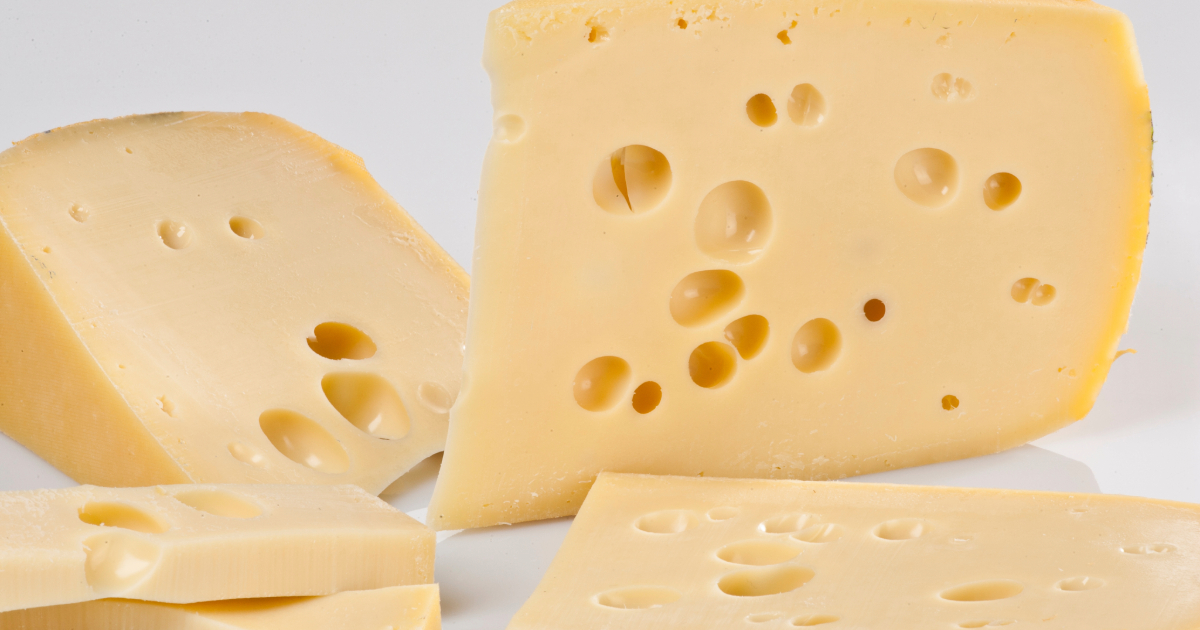Emmental and Gruyere are two of the most renowned cheeses to come out of Switzerland. Both have a long and illustrious history, rooted in tradition.

While they share some similarities, when examined closely there are distinct differences between the two cheeses in terms of production process, taste, texture, appearance and more.
History and Origins
Emmental has a history dating back to the 13th century, originating in the Emmental valley of Switzerland. Gruyere also has its roots in Switzerland, named after the town of Gruyeres where production began in the 11th century.
Production Process
The production processes differ quite significantly between the two cheeses:
Emmental
- Starts by heating fresh cow's milk combined with rennet to coagulate the curds.
- Curds are cut, stirred, heated, then pressed to shape the wheels.
- Wheels are brined to form a rind, then aged for a minimum of 3 months at cool 50-55°F temperature.
- Its famous holes come from pockets of carbon dioxide released during aging.
Gruyere
- Begins by heating raw cow's milk with rennet to separate curds from whey.
- Curds placed in molds, brine salted, then smeared with bacteria culture.
- Ripened at room temperature for 2+ months.
- Aged for minimum 8 months, up to 10 years for complex flavor.
Taste and Texture
Emmental features a mild, buttery and slightly sweet flavor, with a firm yet springy texture. Its taste is delicate and pairs well with fruits or breads.
Comparatively, Gruyere delivers a more robust, complex flavor with elements of fruitiness and nuttiness. Its texture is denser than Emmental, with a creamy mouthfeel when melted. Aged Gruyere intensifies in taste over time.
So while Emmental stays mild, Gruyere develops bolder notes - making it a common choice for strong-flavored fondues.
Key Takeaway: Emmental leans mildly sweet and buttery versus Gruyere’s fuller-bodied, fruitier profile that intensifies with age over its longer ripening process.
Appearance and Texture
Visually, differences arise in the hole formation:
- Emmental has large, irregular holes giving it the stereotypical “Swiss cheese” look.
- Gruyere’s smaller, sparse holes often disappear entirely over long aging.
As for texture:
- Emmental is semi-firm, slightly springy when bitten into.
- Gruyere is dense and smooth, turning creamy when melted.
So Emmental’s springy bite differs from the fudgy melt-in-your mouth texture of Gruyere.
| Emmental | Gruyere |
|---|---|
| Pale yellow color | Slightly darker yellow hue |
| Large, irregular holes | Fewer, smaller holes fading over time |
| Semi-firm, springy texture | Dense and smooth, creamy melt |
Nutrition
Both cheeses are rich in protein, calcium, phosphorus and key vitamins. Let’s examine the nutritionals:
Per 100g serving:
| Nutrient | Emmental | Gruyere |
|---|---|---|
| Calories | 380 kcal | 413 kcal |
| Fat | 29 g | 32 g |
| Carbs | 1.5 g | 0.1 g |
| Protein | 27 g | 27 g |
| Calcium | 30% DV | 41% DV |
| Sodium | 25% DV | 29% DV |
So while nutritionally similar, Gruyere skews slightly higher in fat and calories due to its full-fat milk base versus Emmental’s partly skimmed milk.
Uses
The excellent melting properties of both cheeses make them prime choices for:
- Fondue - particularly Gruyere
- Grilled sandwiches
- Gratins
- Souffles and baked pasta dishes
Beyond melting applications, they can be enjoyed on cheese boards, in salads, with cured meats, etc. Gruyere also stands up better to bold ingredients given its intense flavor.
Price and Availability
Both are available internationally, but Gruyere runs 20-50% higher in price than Emmental. At specialty stores expect to pay:
- Emmental: $15 - $20 per pound
- Gruyere: $18 - $25 per pound
The increased cost comes from Gruyere’s extensive aging and lower yield - but it delivers an elevated tasting experience.
FAQs
Can Emmental and Gruyere be used interchangeably?
While they share excellent melting properties, their flavor profiles differ quite significantly, with Gruyere being much bolder. Emmental makes an acceptable substitute in most recipes but cannot fully replicate Gruyere’s depth.
Is one cheese healthier than the other?
Broadly they are nutritionally similar, both providing ample protein, calcium and other nutrients. Gruyere skews slightly higher in fat and sodium due to full-fat milk and brining during production.
Which cheese would you recommend?
It depends on the application and personal taste preferences! For mild flavor, Emmental is more versatile. But for rich fondues or strong-flavored dishes, Gruyere’s intensity is the best fit.
Conclusion
When it comes to Swiss cheeses, both Emmental and Gruyere have rightfully earned global fame for their unique flavors and melting capabilities. Upon looking closely, there are clear points of differentiation in terms of their production techniques, aging times, taste profiles, appearances and typical usage.
Gruyere takes the lead when bold flavor is needed thanks to its small-batch raw milk base and extended ripening, warranting its higher price tag.
For milder recipes, Emmental’s delicate nuttiness generously satisfies.

